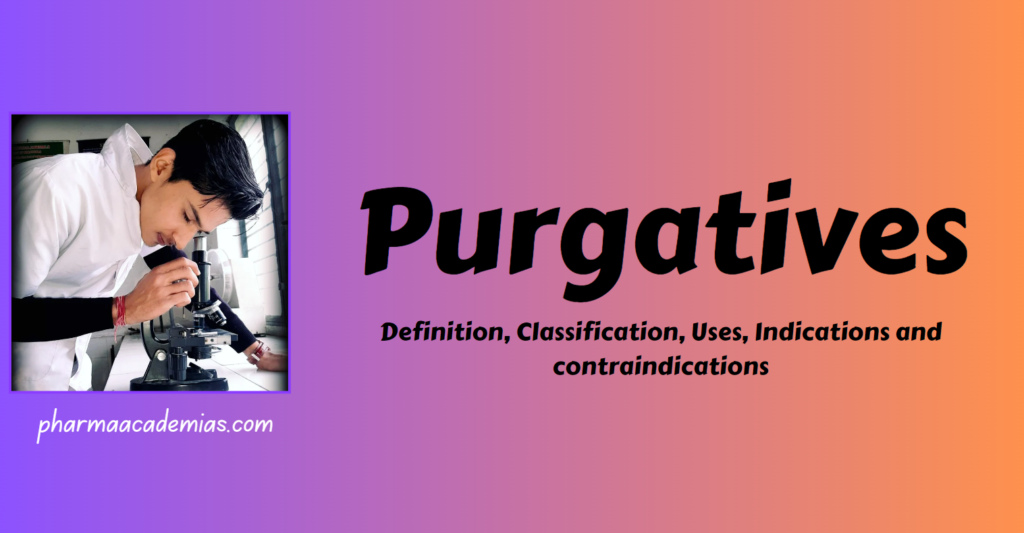Purgatives are substances or medications that induce rapid bowel evacuation, often associated with watery stools. They are used to thoroughly clean the intestines before medical procedures or surgeries.
Classification of Purgatives
Purgatives can be categorized into different classes based on their mechanisms of action. The two main classes are osmotic purgatives and irritant or stimulant purgatives.
1. Osmotic Purgatives:
Osmotic purgatives are a class of substances or medications that induce bowel movements by creating an osmotic gradient in the intestines, leading to the retention of water within the bowel lumen. The increased water content softens the stool, promotes bowel movements, and healthcare professionals commonly use it for cleansing before medical procedures or to relieve severe constipation.
Examples:
Polyethylene Glycol (PEG), Magnesium Citrate, Lactulose
Mechanism:
Create an osmotic gradient in the intestines, drawing water into the bowel lumen.
Soften the stool and promote bowel movements.
2. Irritant or Stimulant Purgatives:
Irritant or stimulant purgatives are substances or medications that induce rapid bowel movements by directly irritating the intestinal mucosa and stimulating peristalsis. These purgatives are often used for their strong and prompt laxative effects, such as bowel cleansing before medical procedures or in cases of severe constipation.
Examples:
Senna, Bisacodyl, Castor Oil
Mechanism:
Directly stimulate the intestinal mucosa, irritating.
Promote increased peristalsis and fluid secretion into the intestines.
Pharmacological Actions of Purgatives
1. Osmotic Purgatives:
Create an osmotic gradient in the intestines, leading to water influx.
Soften stool and promote bowel movements.
2. Irritant or Stimulant Purgatives:
Directly stimulate the intestinal mucosa, causing increased peristalsis.
Promote fluid and electrolyte secretion into the intestines.
Dose of Purgatives
– Dosage varies depending on the specific purgative and the intended purpose.
– Administered under the supervision of healthcare professionals.
Indications
– Bowel preparation for diagnostic procedures (colonoscopy, surgery).
– Treatment of severe constipation or impaction.
– Emergency evacuation of the bowels in poisoning cases.
Contraindications
– Severe dehydration.
– Electrolyte imbalances.
– Inflammatory bowel diseases.
– Acute abdominal conditions.
– Renal impairment.
– Pregnancy (caution is advised).
Use purgatives with caution and only as directed by healthcare professionals due to their potential for side effects and the need for appropriate monitoring during use. It is crucial to follow specific guidelines healthcare providers provide when using purgatives.




hello, thats great post